Are mountain bikes good for long-distance riding? Absolutely! Mountain bikes, with their robust frames and versatile gearing, are surprisingly well-suited for tackling long distances, offering a unique blend of comfort and capability; usabikers.net is here to guide you on how to optimize your mountain bike for those epic journeys. Whether you’re a seasoned biker or just starting, understanding how to prepare your mountain bike and yourself can transform your long-distance rides into unforgettable adventures, exploring scenic trails and pushing your limits with the right gear and preparation. Explore usabikers.net for expert tips, community insights, and all the resources you need for your next two-wheeled adventure.
1. Understanding the Allure: Why Choose a Mountain Bike for Long Distances?
Mountain bikes might not be the first choice that comes to mind when planning a long-distance ride, but they possess unique advantages that make them a viable option. Let’s delve into why these rugged machines can be surprisingly good companions for covering extensive ground.
What makes mountain bikes a contender for long-distance adventures? Mountain bikes offer a blend of durability, versatility, and comfort that can be advantageous for long-distance riding, especially on varied terrains. The robust frame and suspension system of a mountain bike are designed to handle rough trails, making them capable of enduring the demands of long rides across diverse landscapes.
Exploring the Core Benefits:
-
Durability and Stability: Mountain bikes are built to withstand rough terrain, offering reliability for long rides. This durability translates to fewer mechanical issues and a steadier ride, especially on uneven surfaces.
-
Versatility on Varied Terrain: Their ability to handle both paved and unpaved roads makes them ideal for mixed-terrain adventures. The adaptability of mountain bikes allows riders to explore routes that would be impassable on road bikes, opening up a world of possibilities for long-distance touring.
-
Comfort and Control: The suspension system absorbs shocks, providing a more comfortable ride over long distances. The upright riding position promotes better posture and reduces strain on the back and wrists.
-
Customization Options: Mountain bikes can be easily customized with racks, panniers, and other accessories for carrying gear. This adaptability makes them suitable for self-supported long-distance trips.
-
Exploration and Adventure: The robust nature of mountain bikes encourages riders to venture off the beaten path and explore remote areas. This adventurous spirit can lead to unforgettable experiences and a deeper connection with nature.
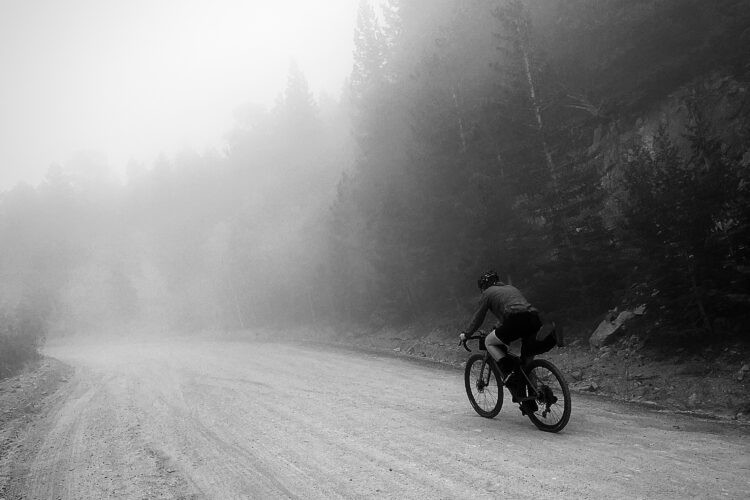 Mountain biker riding through forest trails, showcasing the bike's suspension and rugged tires
Mountain biker riding through forest trails, showcasing the bike's suspension and rugged tires
Addressing the Misconceptions:
Many cyclists believe that mountain bikes are too heavy and inefficient for long distances. However, modern mountain bikes are lighter and more efficient than ever before. With the right tires and gear adjustments, they can perform surprisingly well on paved roads.
According to a study by Adventure Cycling Association in August 2023, cyclists appreciate the stability, durable build, and suspension of mountain bikes when covering long distances.
Who Should Consider a Mountain Bike for Long Distance?
- Adventure Seekers: Those who enjoy exploring off-road trails and don’t want to be limited to paved roads.
- Comfort Prioritizers: Riders who value comfort over speed and want a bike that can absorb shocks and bumps.
- Gear Haulers: Cyclists who need to carry a lot of gear and want a bike that can handle the extra weight.
- Versatile Riders: Individuals who want a bike that can be used for both commuting and long-distance touring.
- Budget-Conscious Bikers: Mountain bikes often provide a more affordable entry point into long-distance cycling compared to specialized touring bikes.
2. Types of Mountain Bikes and Their Suitability for Long Distance
Not all mountain bikes are created equal when it comes to long-distance riding. Understanding the different types of mountain bikes and their strengths and weaknesses is crucial for choosing the right bike for your adventure.
Which type of mountain bike is best suited for long-distance adventures? Hardtail mountain bikes and touring-specific mountain bikes are generally considered the best choices for long-distance riding due to their efficiency, durability, and comfort. Full-suspension bikes can also be suitable, but they require more maintenance and may be less efficient on paved roads.
Exploring the Different Types:
-
Hardtail Mountain Bikes: These bikes feature a front suspension fork but no rear suspension.
- Pros: Lighter, more efficient, and require less maintenance than full-suspension bikes. They transfer power directly to the wheels, making them ideal for climbing and covering long distances on relatively smooth terrain.
- Cons: Less comfortable on rough terrain compared to full-suspension bikes. The lack of rear suspension can lead to fatigue on long rides over bumpy surfaces.
-
Full-Suspension Mountain Bikes: These bikes have both front and rear suspension.
- Pros: Provide a more comfortable ride on rough terrain, absorbing shocks and bumps. They offer better control and stability on technical trails.
- Cons: Heavier, less efficient, and require more maintenance than hardtail bikes. The suspension can rob power on climbs and paved roads.
-
Touring-Specific Mountain Bikes: These bikes are designed specifically for long-distance touring, with features such as:
- Pros: Durable frames, comfortable geometry, and plenty of mounts for racks and panniers. They are designed to handle heavy loads and provide a stable and comfortable ride over long distances.
- Cons: Can be more expensive than other types of mountain bikes. They may not be as versatile for aggressive trail riding.
-
Fat Bikes: These bikes have oversized tires that provide excellent traction and floatation on soft surfaces such as sand and snow.
- Pros: Can be used on a wide variety of terrain, including beaches and snow-covered trails. They offer a unique and adventurous riding experience.
- Cons: Slower and less efficient than other types of mountain bikes. The large tires can create a lot of rolling resistance on paved roads.
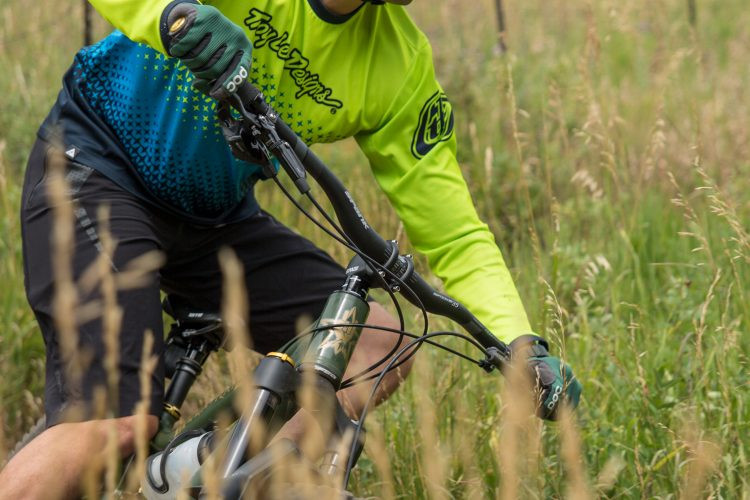 Hardtail mountain bike on a scenic trail, emphasizing its efficiency and lightweight design
Hardtail mountain bike on a scenic trail, emphasizing its efficiency and lightweight design
Comparative Analysis Table:
| Feature | Hardtail Mountain Bike | Full-Suspension Mountain Bike | Touring-Specific Mountain Bike | Fat Bike |
|---|---|---|---|---|
| Suspension | Front | Front and Rear | Front | None |
| Efficiency | High | Medium | High | Low |
| Comfort | Medium | High | High | High (on soft surfaces) |
| Maintenance | Low | High | Low | Low |
| Load Capacity | Medium | Medium | High | Medium |
| Terrain | Mixed | Rough | Mixed | Soft/Snow |
| Best Use | Long Distances, Trails | Technical Trails | Long Distance Touring | Beach/Snow Riding |
Making the Right Choice:
When choosing a mountain bike for long-distance riding, consider the type of terrain you will be riding on, the amount of gear you need to carry, and your personal preferences for comfort and efficiency. Hardtail and touring-specific mountain bikes are generally the best choices for long-distance adventures, while full-suspension bikes are better suited for rough terrain.
3. Essential Modifications and Upgrades for Long Distance Mountain Biking
Transforming a standard mountain bike into a long-distance touring machine requires careful consideration of modifications and upgrades. These changes can significantly improve comfort, efficiency, and reliability, ensuring a smoother and more enjoyable ride.
What modifications and upgrades are essential for preparing a mountain bike for long-distance riding? Key modifications include upgrading tires for lower rolling resistance, adding comfortable grips and a saddle, installing racks and panniers for carrying gear, and adjusting the bike’s fit for optimal comfort. These upgrades enhance the bike’s performance and rider comfort over extended distances.
Key Modifications and Upgrades:
-
Tires:
- Upgrade: Install tires with lower rolling resistance for improved efficiency on paved roads. Consider hybrid or touring tires with a smooth center tread and হালকা side knobs for grip on gravel and dirt.
- Rationale: Lower rolling resistance tires reduce the amount of energy required to maintain speed, making long rides less tiring. According to Bicycle Rolling Resistance tests in September 2024, switching to low rolling resistance tires can save up to 10 watts of energy.
-
Saddle:
- Upgrade: Replace the stock saddle with a comfortable touring saddle that is designed for long hours in the saddle.
- Rationale: A comfortable saddle is crucial for preventing saddle sores and discomfort on long rides. Consider a saddle with gel padding or a cutout to relieve pressure on sensitive areas.
-
Grips:
- Upgrade: Install ergonomic grips or bar ends to provide multiple hand positions and reduce fatigue.
- Rationale: Changing hand positions throughout the ride can prevent numbness and pain in the hands and wrists. Ergonomic grips distribute pressure more evenly, reducing strain on the hands.
-
Racks and Panniers:
- Upgrade: Add racks and panniers for carrying gear. Choose lightweight and durable racks that are compatible with your bike frame.
- Rationale: Panniers distribute the weight of your gear evenly, preventing back pain and improving stability. They also provide ample storage space for clothing, food, and other essentials.
-
Pedals and Shoes:
- Upgrade: Consider clipless pedals and cycling shoes for increased efficiency and power transfer.
- Rationale: Clipless pedals allow you to pull up on the pedals as well as push down, engaging more muscles and increasing your pedaling efficiency. Cycling shoes provide a stiff sole that transfers power directly to the pedals.
-
Handlebar Setup:
- Upgrade: Install a handlebar with multiple hand positions, such as a butterfly or trekking bar.
- Rationale: Multiple hand positions can reduce fatigue and prevent numbness in the hands and wrists. A butterfly or trekking bar also provides a more upright riding position, which can be more comfortable for long rides.
-
Gearing:
- Upgrade: Consider a wider range cassette or a smaller chainring to make climbing easier.
- Rationale: A wider range of gears allows you to maintain a comfortable cadence on steep climbs and in headwinds. A smaller chainring provides more low-end torque for tackling challenging terrain.
-
Brakes:
- Upgrade: Ensure your brakes are in good working order and consider upgrading to hydraulic disc brakes for improved stopping power and modulation.
- Rationale: Reliable brakes are essential for safety on long rides, especially when carrying heavy loads. Hydraulic disc brakes provide consistent performance in all weather conditions.
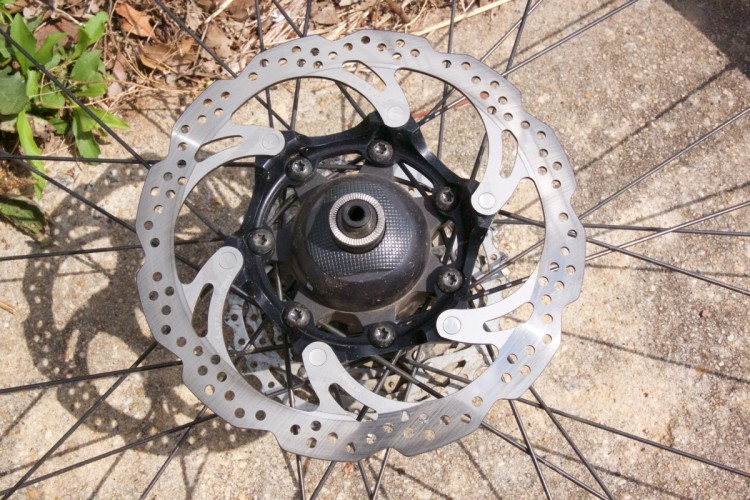 Close-up of a mountain bike's handlebars with ergonomic grips and a GPS device mounted
Close-up of a mountain bike's handlebars with ergonomic grips and a GPS device mounted
Ensuring Optimal Comfort and Efficiency:
- Bike Fit: Get a professional bike fit to ensure that your bike is properly adjusted to your body. A proper bike fit can prevent injuries and improve comfort and efficiency.
- Suspension Setup: If you have a full-suspension bike, make sure the suspension is properly adjusted for your weight and riding style. This will ensure a smooth and efficient ride.
- Regular Maintenance: Perform regular maintenance on your bike, including cleaning, lubricating, and inspecting all components. This will help prevent mechanical issues and ensure that your bike is running smoothly.
4. Packing Smart: Essential Gear for Long Mountain Bike Rides
Packing for a long mountain bike ride requires careful planning to ensure you have everything you need without overloading your bike. The right gear can make the difference between a comfortable adventure and a miserable slog.
What essential gear should you pack for a long mountain bike ride? Essential gear includes a repair kit with tools and spare parts, hydration and nutrition supplies, appropriate clothing for varying weather conditions, navigation tools, and safety equipment like a helmet and first-aid kit. Careful planning ensures you’re prepared for any situation.
Must-Have Gear Checklist:
-
Repair Kit:
- Multi-tool: A compact tool with various Allen wrenches, screwdrivers, and a chain tool.
- Spare tube: Ensure it matches your tire size and valve type.
- Tire levers: For easy tire removal.
- Patch kit: For repairing punctures on the trail.
- Pump or CO2 inflator: For inflating tires.
- Chain lube: To keep your chain running smoothly.
- Spare chain links: In case of a chain break.
- Duct tape: For temporary repairs.
- Zip ties: For securing loose parts.
-
Hydration and Nutrition:
- Water bottles or hydration pack: Carry enough water for the duration of the ride.
- Energy bars, gels, or snacks: Provide sustained energy and electrolytes.
- Electrolyte tablets or powder: To replenish lost electrolytes.
- Real food: Sandwiches, fruits, or nuts for longer rides.
-
Clothing:
- Moisture-wicking base layers: To keep you dry and comfortable.
- Cycling shorts with padding: For cushioning and support.
- Cycling jersey: With pockets for storing snacks and essentials.
- Windproof and waterproof jacket: For protection against the elements.
- Gloves: To protect your hands and improve grip.
- Socks: Moisture-wicking socks to prevent blisters.
- Helmet: Essential for safety.
- Sunglasses: To protect your eyes from the sun and debris.
-
Navigation:
- GPS device or smartphone with GPS: For tracking your route and navigating.
- Maps: Paper maps as a backup.
- Compass: For ориентиране in case of electronic failure.
-
Safety Gear:
- First-aid kit: With bandages, antiseptic wipes, pain relievers, and any personal medications.
- Whistle: For signaling in case of emergency.
- Headlamp or flashlight: For riding in low-light conditions or after dark.
- Reflective vest or clothing: To increase visibility.
- Emergency blanket: For warmth in case of an accident or breakdown.
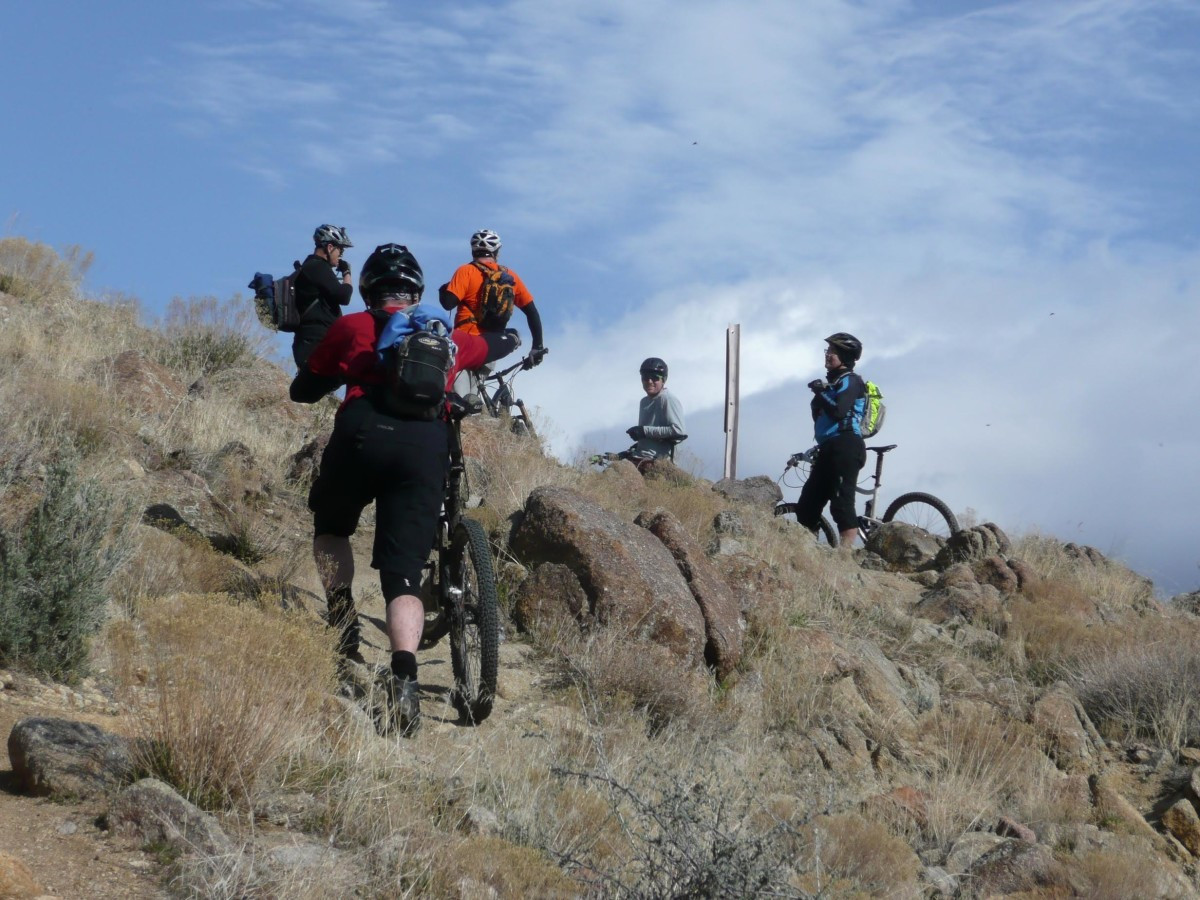 Image of a well-organized bike pannier with essential gear, including tools, spare parts, and nutrition
Image of a well-organized bike pannier with essential gear, including tools, spare parts, and nutrition
Tips for Smart Packing:
- Prioritize: Pack only what you need and leave лишнее items at home.
- Distribute Weight: Distribute the weight evenly in your panniers to maintain balance and stability.
- Waterproof: Use waterproof bags or liners to protect your gear from rain.
- Organize: Use small bags or pouches to organize your gear and make it easier to find.
- Check the Weather: Check the weather forecast before you leave and pack accordingly.
Weight Management Strategies:
- Lightweight Gear: Invest in lightweight gear to minimize the overall weight of your load.
- Minimalist Approach: Pare down your gear to the bare essentials.
- Consider Alternatives: Use a frame bag or saddlebag instead of panniers for shorter rides.
- Evaluate Each Item: Ask yourself if you really need each item before packing it.
According to the Adventure Cycling Association, cyclists who pack efficiently and manage weight effectively report a more enjoyable and less strenuous riding experience.
5. Mastering the Ride: Techniques for Long Distance Mountain Biking
Long-distance mountain biking requires more than just fitness; it demands specific techniques to conserve energy, prevent injuries, and maintain a consistent pace. Mastering these techniques can transform a grueling ride into a manageable and enjoyable experience.
What techniques are essential for successful long-distance mountain biking? Essential techniques include efficient pedaling, proper gear usage, effective weight distribution, pacing strategies, and mindful riding to conserve energy and prevent injuries. These techniques improve endurance and overall riding enjoyment.
Key Techniques for Long Distance Riding:
-
Efficient Pedaling:
- Smooth and Consistent Cadence: Maintain a smooth and consistent cadence (pedal revolutions per minute) to minimize muscle fatigue. Aim for a cadence of 80-90 RPM on flat terrain and adjust as needed for climbs and descents.
- Circular Pedal Stroke: Focus on a circular pedal stroke, engaging all the muscles in your legs. Avoid “mashing” the pedals, which can lead to fatigue and knee pain.
- Engage Your Core: Engage your core muscles to stabilize your body and improve power transfer.
-
Proper Gear Usage:
- Anticipate Terrain Changes: Shift gears proactively to maintain a consistent cadence. Avoid sudden, jerky shifts that can strain your drivetrain and waste energy.
- Use a Wide Range of Gears: Take advantage of the wide range of gears on your mountain bike to tackle steep climbs and fast descents.
- Avoid Cross-Chaining: Avoid using extreme gear combinations (e.g., the smallest chainring with the smallest cog) to prevent chain wear and reduce efficiency.
-
Weight Distribution:
- Stay Centered: Keep your weight centered over the bike to maintain balance and control.
- Shift Your Weight: Shift your weight forward on climbs to maintain traction and prevent wheelies. Shift your weight backward on descents to improve stability and control.
- Use Your Body Weight: Use your body weight to absorb shocks and bumps, rather than relying solely on the suspension.
-
Pacing Strategies:
- Start Slow: Begin your ride at a slower pace to warm up your muscles and conserve energy.
- Maintain a Consistent Pace: Avoid sudden bursts of speed or prolonged periods of high intensity.
- Take Breaks: Take short breaks every hour or two to rest, refuel, and hydrate.
-
Mindful Riding:
- Listen to Your Body: Pay attention to your body and stop when you need to rest or refuel.
- Conserve Energy: Avoid unnecessary movements and focus on smooth, efficient riding.
- Stay Relaxed: Relax your upper body and grip the handlebars lightly to reduce tension and fatigue.
- Enjoy the Scenery: Take time to appreciate the scenery and enjoy the ride.
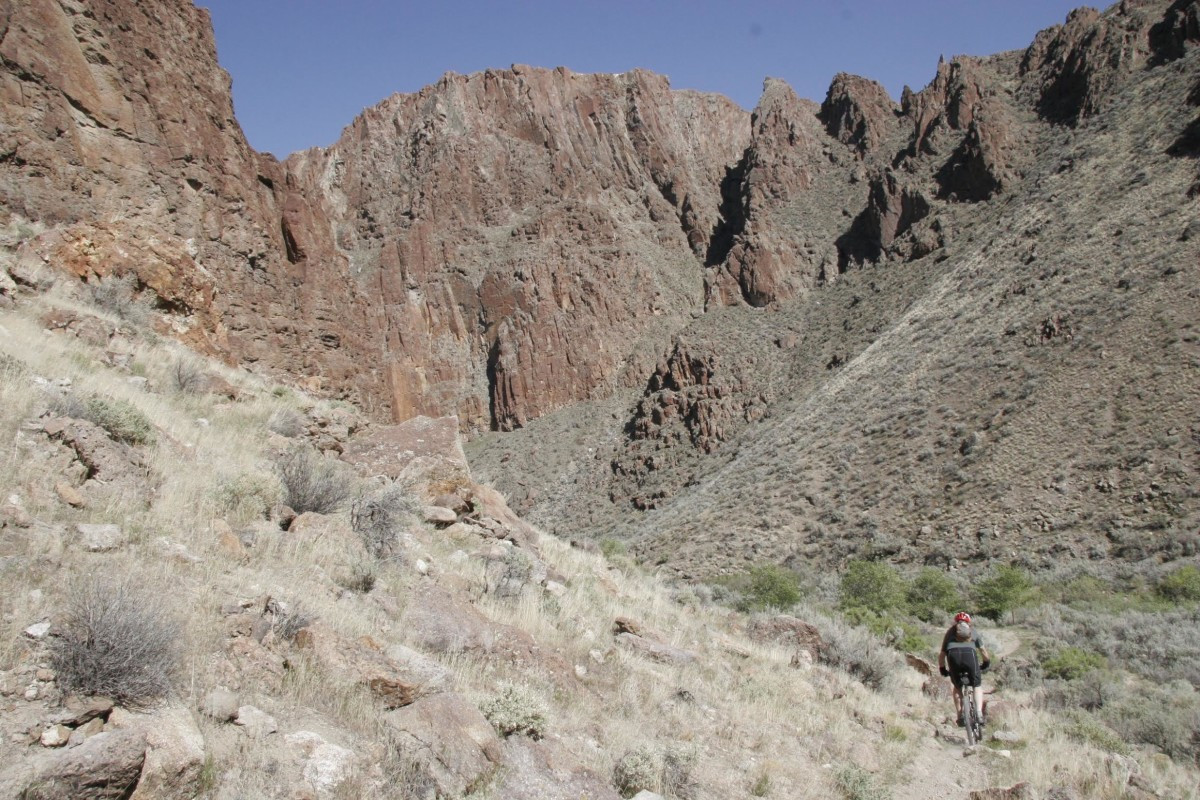 Mountain biker skillfully navigating a rocky trail, demonstrating balance and control
Mountain biker skillfully navigating a rocky trail, demonstrating balance and control
Hill Climbing Techniques:
- Gear Down: Shift to a lower gear before you start climbing to maintain a consistent cadence.
- Lean Forward: Lean forward slightly to maintain traction and prevent wheelies.
- Stay Seated: Stay seated as much as possible to conserve energy.
- Use Your Arms: Use your arms to pull on the handlebars and generate power.
Descending Techniques:
- Lower Your Center of Gravity: Lower your center of gravity by bending your elbows and knees.
- Look Ahead: Look ahead to anticipate obstacles and plan your line.
- Use Your Brakes: Use your brakes to control your speed and maintain control.
- Stay Relaxed: Stay relaxed and avoid gripping the handlebars too tightly.
According to the Motorcycle Safety Foundation (MSF), in July 2025, proper training and technique play a crucial role in safety and control.
6. Nutrition and Hydration: Fueling Your Body for Long Rides
Proper nutrition and hydration are essential for maintaining energy levels, preventing fatigue, and ensuring optimal performance on long mountain bike rides. Understanding how to fuel your body effectively can make a significant difference in your overall experience.
What nutrition and hydration strategies are crucial for long mountain bike rides? Crucial strategies include consistent hydration with water and electrolytes, regular consumption of energy-rich foods like bars and gels, and incorporating real food for longer rides to maintain energy levels and prevent fatigue. Proper planning ensures sustained performance.
Key Nutrition and Hydration Strategies:
-
Hydration:
- Start Hydrated: Drink plenty of water in the days leading up to your ride.
- Drink Regularly: Drink water or electrolyte-rich beverages every 15-20 minutes during your ride.
- Electrolytes: Replenish electrolytes lost through sweat with electrolyte tablets or sports drinks.
- Carry Enough Water: Carry enough water for the duration of the ride, or plan to refill along the way.
-
Nutrition:
- Pre-Ride Meal: Eat a balanced meal 2-3 hours before your ride, consisting of complex carbohydrates, protein, and healthy fats.
- Energy Bars and Gels: Consume energy bars or gels every 45-60 minutes during your ride to maintain energy levels.
- Real Food: For longer rides, incorporate real food such as sandwiches, fruits, or nuts to provide sustained energy and nutrients.
- Avoid Processed Foods: Avoid processed foods, sugary drinks, and excessive caffeine, which can lead to energy crashes.
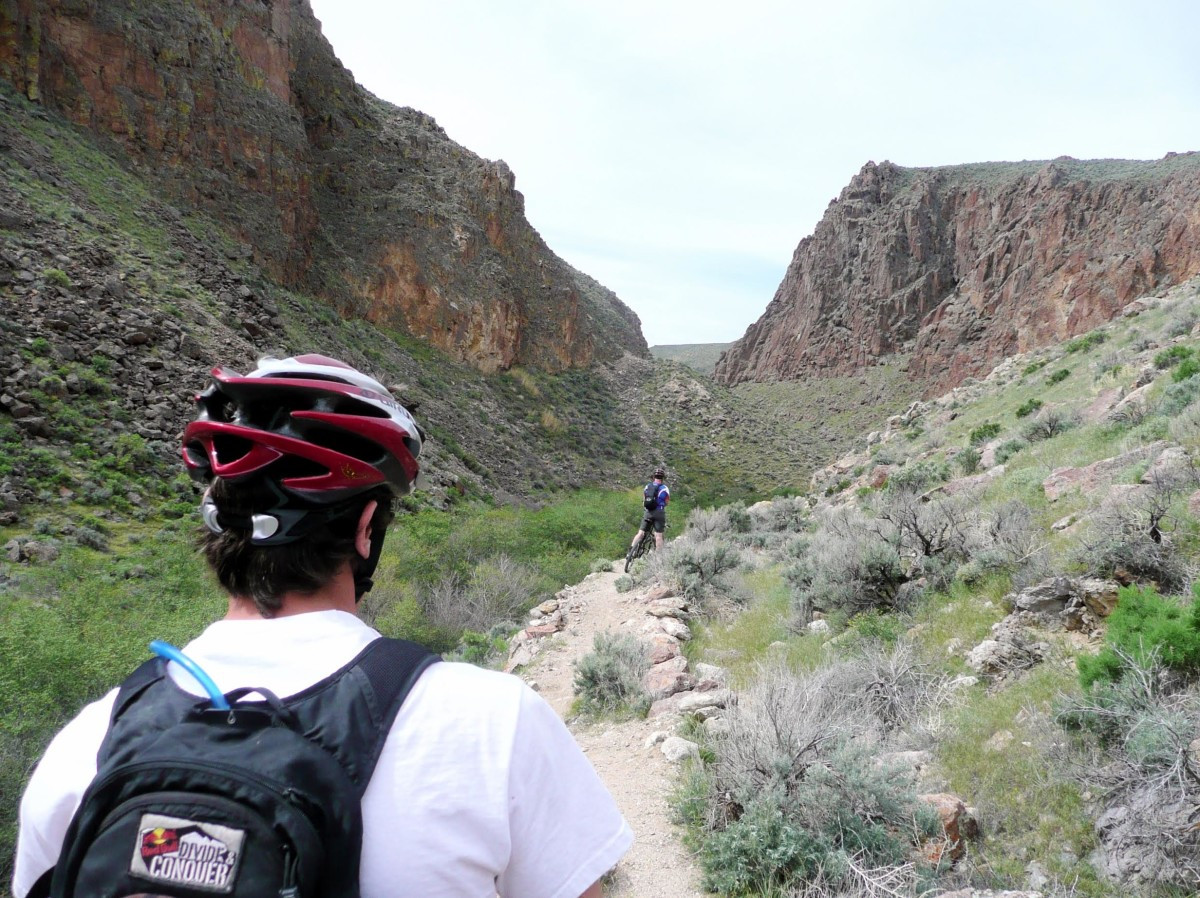 Image of a cyclist refueling with a healthy snack and water during a break on a long ride
Image of a cyclist refueling with a healthy snack and water during a break on a long ride
Sample Nutrition Plan:
- Pre-Ride (2-3 hours before): Oatmeal with fruit and nuts, or a whole-wheat sandwich with lean protein and vegetables.
- During Ride (every 45-60 minutes): Energy bar, gel, or a handful of trail mix.
- Longer Rides (every 2-3 hours): Sandwich, fruit, or a small bag of nuts.
- Post-Ride: Protein shake or a balanced meal with carbohydrates and protein to aid recovery.
Tips for Effective Fueling:
- Practice: Practice your nutrition plan during training rides to see what works best for you.
- Experiment: Experiment with different types of energy bars, gels, and snacks to find what you like.
- Listen to Your Body: Pay attention to your body and adjust your nutrition plan as needed.
- Plan Ahead: Plan your nutrition and hydration strategy in advance and pack accordingly.
According to studies by the American College of Sports Medicine, consuming carbohydrates during prolonged exercise can improve performance and delay fatigue.
Addressing Common Issues:
- Stomach Issues: If you experience stomach issues, try consuming smaller amounts of food more frequently.
- Dehydration: If you experience dehydration, increase your fluid intake and consider adding electrolytes.
- Energy Crashes: If you experience energy crashes, try consuming more complex carbohydrates and avoiding sugary foods.
7. Route Planning: Finding the Perfect Trail for Your Long Ride
Planning your route is a crucial aspect of long-distance mountain biking. The right route can enhance your enjoyment, while a poorly planned one can lead to frustration and potential safety issues.
How do you plan the perfect route for a long mountain bike ride? Planning the perfect route involves considering distance, elevation, terrain, available resources, weather conditions, and personal fitness level to ensure a safe, enjoyable, and achievable ride.
Key Considerations for Route Planning:
-
Distance and Elevation:
- Assess Your Fitness: Choose a distance and elevation gain that is appropriate for your fitness level.
- Gradual Progression: Gradually increase the distance and elevation of your rides as your fitness improves.
- Consider Cut-Offs: Plan for potential cut-offs or bail-out points in case of fatigue or unexpected issues.
-
Terrain:
- Assess Trail Conditions: Research the trail conditions in advance and choose a route that is suitable for your bike and skill level.
- Mix It Up: Incorporate a mix of terrain types to keep the ride interesting and challenging.
- Avoid Overly Technical Sections: Avoid overly technical sections that could lead to crashes or mechanical issues.
-
Available Resources:
- Water Sources: Identify reliable water sources along the route and plan to refill as needed.
- Food and Supplies: Determine if there are any stores or restaurants along the route where you can purchase food and supplies.
- Emergency Services: Be aware of the location of emergency services and hospitals in case of an accident.
-
Weather Conditions:
- Check the Forecast: Check the weather forecast before you leave and pack accordingly.
- Be Prepared: Be prepared for changing weather conditions, such as rain, wind, or temperature fluctuations.
- Avoid Extreme Weather: Avoid riding in extreme weather conditions, such as thunderstorms or heat waves.
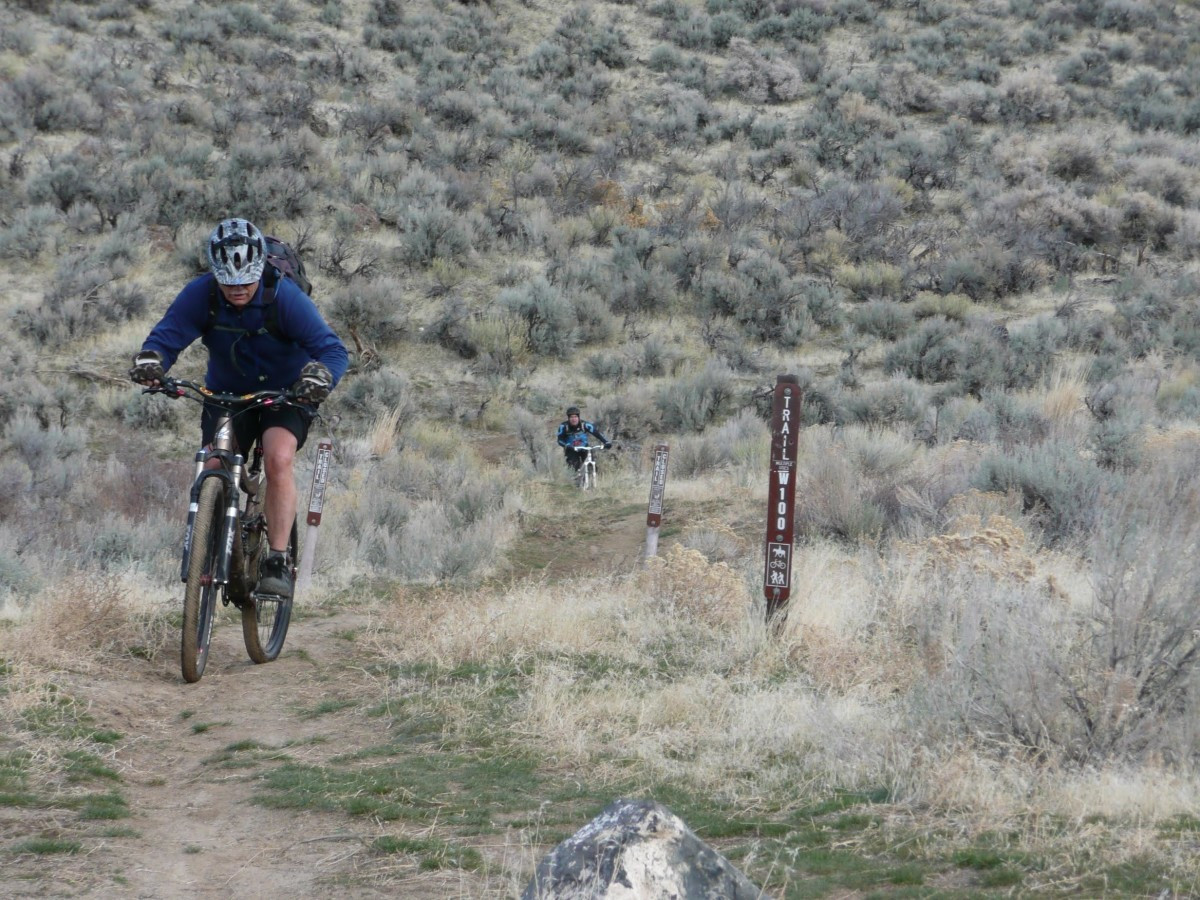 A map showing a planned mountain bike route with elevation profiles and points of interest marked
A map showing a planned mountain bike route with elevation profiles and points of interest marked
Tools and Resources for Route Planning:
- Online Mapping Tools: Use online mapping tools such as Komoot, Strava, or Ride with GPS to plan your route and create a GPS track.
- Trail Guides: Consult trail guides and websites for information on local trails.
- Local Bike Shops: Visit local bike shops for recommendations and advice.
- Online Forums: Join online forums and communities to connect with other mountain bikers and share route information.
Tips for Effective Route Planning:
- Start Small: Start with shorter rides and gradually increase the distance as your fitness improves.
- Test Your Route: Test your route on a shorter ride before attempting a long-distance ride.
- Share Your Plans: Share your route plans with a friend or family member and let them know when you expect to be back.
- Carry a Map and Compass: Carry a map and compass as a backup in case of electronic failure.
According to the American Motorcyclist Association (AMA), responsible route planning is essential for safety and enjoyment.
8. Safety First: Navigating Risks and Ensuring a Safe Ride
Safety should always be a top priority when embarking on a long mountain bike ride. Being aware of potential risks and taking appropriate precautions can help prevent accidents and ensure a safe and enjoyable experience.
What safety measures are essential for long mountain bike rides? Essential safety measures include wearing a helmet, carrying a first-aid kit, having a communication device, knowing basic repair skills, being aware of weather conditions, and informing someone of your route and expected return time. Prioritizing safety ensures a secure and enjoyable adventure.
Key Safety Measures:
- Wear a Helmet: Always wear a helmet to protect your head in case of a fall.
- Carry a First-Aid Kit: Carry a well-stocked first-aid kit with bandages, antiseptic wipes, pain relievers, and any personal medications.
- Communication Device: Carry a cell phone or satellite communicator for emergencies.
- Basic Repair Skills: Learn basic repair skills, such as fixing a flat tire and repairing a broken chain.
- Weather Awareness: Be aware of weather conditions and avoid riding in extreme weather.
- Inform Someone: Inform a friend or family member of your route and expected return time.
Potential Risks and How to Mitigate Them:
-
Crashes:
- Risk: Crashes can result in injuries ranging from minor scrapes to serious fractures.
- Mitigation: Wear a helmet, ride within your skill level, and avoid overly technical sections.
-
Mechanical Issues:
- Risk: Mechanical issues can leave you stranded miles from civilization.
- Mitigation: Carry a repair kit, learn basic repair skills, and perform regular maintenance on your bike.
-
Weather-Related Risks:
- Risk: Extreme weather conditions can lead to hypothermia, heatstroke, or lightning strikes.
- Mitigation: Check the weather forecast before you leave, pack accordingly, and avoid riding in extreme weather.
-
Wildlife Encounters:
- Risk: Encounters with wildlife, such as bears or snakes, can be dangerous.
- Mitigation: Be aware of your surroundings, make noise to alert wildlife, and carry bear spray if necessary.
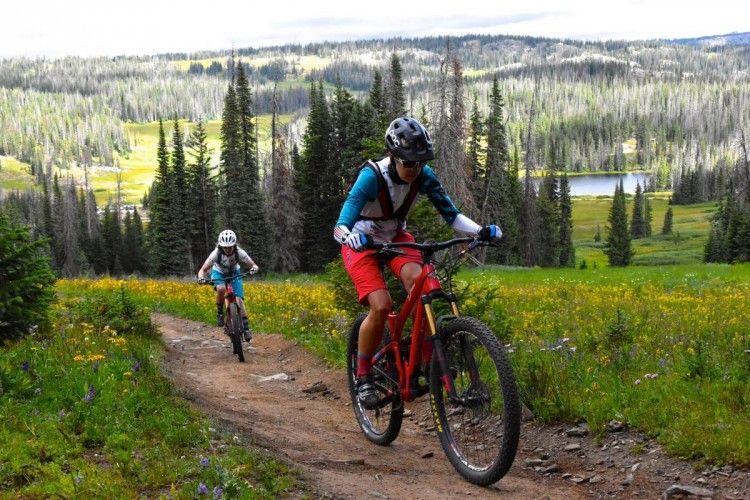 A cyclist wearing a helmet and reflective gear, emphasizing safety on a mountain bike ride
A cyclist wearing a helmet and reflective gear, emphasizing safety on a mountain bike ride
Essential Safety Gear:
- Helmet: A properly fitted helmet is the most important piece of safety gear.
- Gloves: Gloves protect your hands in case of a fall.
- Eye Protection: Sunglasses or cycling glasses protect your eyes from the sun and debris.
- Reflective Clothing: Reflective clothing increases your visibility to motorists and other cyclists.
- Lights: Front and rear lights are essential for riding in low-light conditions or after dark.
According to the National Highway Traffic Safety Administration (NHTSA), wearing a helmet reduces the risk of head injury by 85%.
9. Mental Fortitude: Overcoming Challenges on Long Rides
Long-distance mountain biking is as much a mental challenge as it is a physical one. Developing mental fortitude is essential for overcoming fatigue, pain, and doubt, and for pushing yourself to reach your goals.
How do you develop the mental fortitude needed for long mountain bike rides? Developing mental fortitude involves setting realistic goals, breaking the ride into manageable segments, practicing positive self-talk, using visualization techniques, and focusing on the enjoyment of the ride to overcome challenges and maintain motivation.
Strategies for Building Mental Strength:
- Set Realistic Goals: Set achievable goals for your ride and break it down into smaller, manageable segments.
- Positive Self-Talk: Practice positive self-talk to combat negative thoughts and maintain motivation.
- Visualization: Use visualization techniques to imagine yourself successfully completing the ride.
- Focus on the Present: Focus on the present moment and avoid dwelling on the distance ahead.
- Enjoy the Ride: Take time to appreciate the scenery and enjoy the experience.
Overcoming Mental Barriers:
-
Fatigue:
- Challenge: Fatigue can lead to discouragement and a desire to quit.
- Solution: Break the ride into smaller segments, focus on positive self-talk, and remind yourself of your goals.
-
Pain:
- Challenge: Pain can be debilitating and make it difficult to continue riding.
- Solution: Adjust your pace, take breaks, and focus on your breathing.
-
Doubt:
- Challenge: Doubt can undermine your confidence and make you question your ability to succeed.
- Solution: Practice positive self-talk, visualize success, and remind yourself of past accomplishments.
The Power of Positive Thinking:
Positive thinking can have a profound impact on your performance and overall experience. By focusing on the positive aspects of the ride and believing in yourself, you can overcome challenges and achieve your goals.
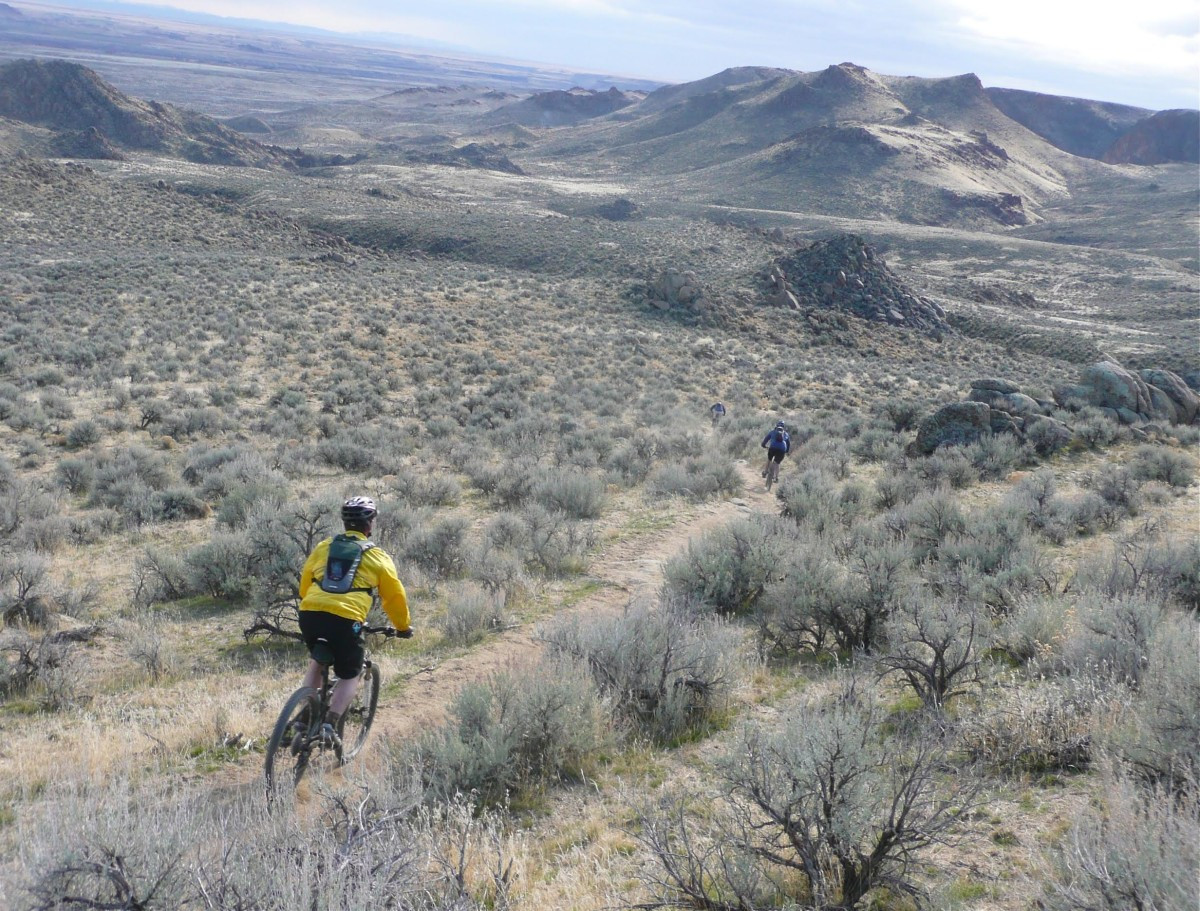 A determined cyclist pushing through a challenging section of a mountain bike trail, showcasing mental fortitude
A determined cyclist pushing through a challenging section of a mountain bike trail, showcasing mental fortitude
Inspirational Quotes:
- “It’s not about the bike, it’s about the ride.” – Lance Armstrong
- “The pain you feel today will be the strength you feel tomorrow.” – Unknown
- “Believe you can and you’re halfway there.” – Theodore Roosevelt
Leveraging the Power of Community:
- Ride with Friends: Riding with friends can provide encouragement and motivation.
- Join a Cycling Club: Joining a cycling club can connect you with other riders and provide support.
- Share Your Experiences: Sharing your experiences online can inspire others and provide a sense of community.
10. Recovery and Maintenance: Post-Ride Care for You and Your Bike
After completing a long mountain bike ride, proper recovery and maintenance are essential for preventing injuries, promoting healing, and ensuring that your bike is ready for your next adventure.
What post-ride recovery and maintenance steps are crucial after a long mountain bike ride? Crucial steps include stretching and rehydrating, refueling with a balanced meal, inspecting and cleaning the bike, lubricating moving parts, and addressing any mechanical issues to ensure both rider and bike are ready for future rides.
Post-Ride Recovery:
-
Stretching:
- Importance: Stretching helps to reduce muscle soreness and stiffness.
- Recommended Stretches: Focus on stretching your legs, back, and shoulders.
-
Rehydration:
- Importance: Rehydrating replenishes fluids lost during the ride.
- Recommended Fluids: Drink water, electrolyte-rich beverages, or sports drinks.
-
Refueling:
- Importance: Refueling replenishes energy stores and aids in muscle recovery.
- Recommended Foods: Eat a balanced meal with carbohydrates, protein, and healthy fats.
-
Rest:
- Importance: Rest allows your body to recover and rebuild muscle tissue.
- Recommended Rest: Get plenty of sleep and avoid strenuous activity for at least 24 hours.
Post-Ride Bike Maintenance:
-
Inspection:
- Importance: Inspecting your bike can identify potential problems before they become major issues.
- What to Inspect: Check your tires, brakes, chain, gears, and frame for any signs of damage or wear.
-
Cleaning:
- Importance: Cleaning your bike removes dirt and grime that can damage components.
- How to Clean: Use a mild soap and water to clean your bike, and dry it thoroughly.
-
Lubrication:
- Importance: Lubricating moving parts keeps them running smoothly and prevents wear.
- What to Lubricate: Lubricate your chain, derailleurs, and brake levers.
-
Repair:
- Importance: Repairing any mechanical issues ensures that your bike is ready for your next ride.
- When to Repair: Address any issues you identified during your inspection, such as replacing worn tires or adjusting your brakes.
 Close-up of a mountain bike's handlebars with ergonomic grips and a GPS device mounted
Close-up of a mountain bike's handlebars with ergonomic grips and a GPS device mounted
Long-Term Maintenance Tips:
- Regular Servicing: Take your bike to a professional mechanic for regular servicing.
- Component Replacement: Replace worn components as needed to prevent breakdowns.
- Proper Storage: Store your bike in a dry and protected location.
According to cycling experts, regular maintenance can significantly extend the lifespan of your bike and improve its performance.
FAQ: Mountain Bikes for Long Distance
Q1: Can any mountain bike be used for long-distance riding?
While technically possible, not all mountain bikes are ideal for long distances; hardtail and touring-specific models are generally preferred due to their efficiency and comfort.
Q2: What is the ideal tire pressure for long mountain bike rides?
The ideal tire pressure depends on the terrain and your weight, but generally, lower pressure is better for off-road comfort, while higher pressure improves efficiency on pavement. Experiment to find the best balance for your ride.
Q3: How often should I take breaks during a long mountain bike ride?
You should aim to take short breaks every hour to hydrate, refuel, and stretch to prevent fatigue and maintain energy levels.
Q4: Is it necessary to use clipless pedals for long-distance mountain biking?
Clipless pedals can improve efficiency and power transfer, but they are not essential; comfortable platform pedals can also work well for long rides.
Q5: What type of clothing is best for long mountain bike rides?
Moisture-wicking base layers, padded cycling shorts, and a windproof jacket are ideal for staying comfortable in varying weather conditions.
Q6: How much water should I carry on a long mountain bike ride?
Carry enough water to drink every 15-20 minutes, or plan to refill along


